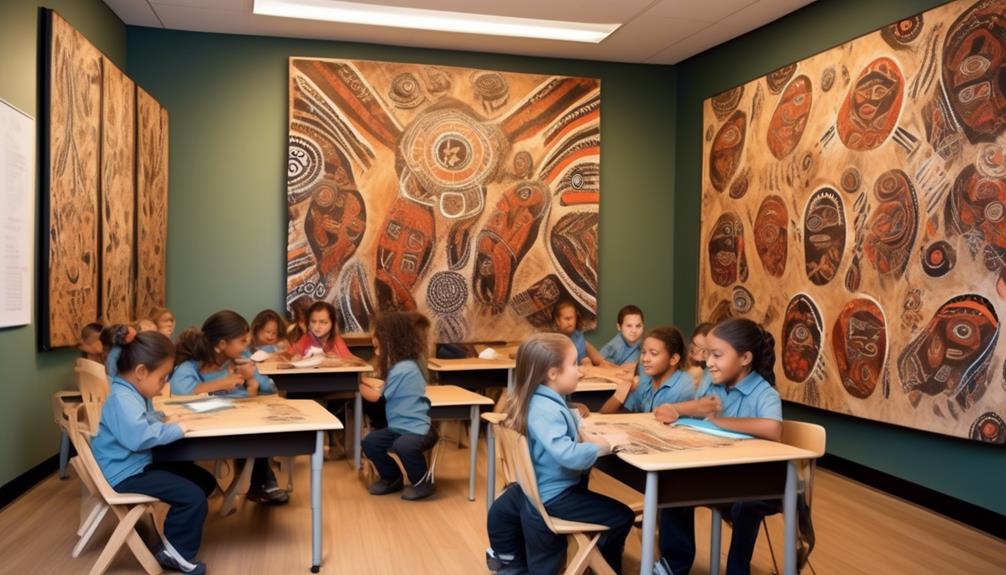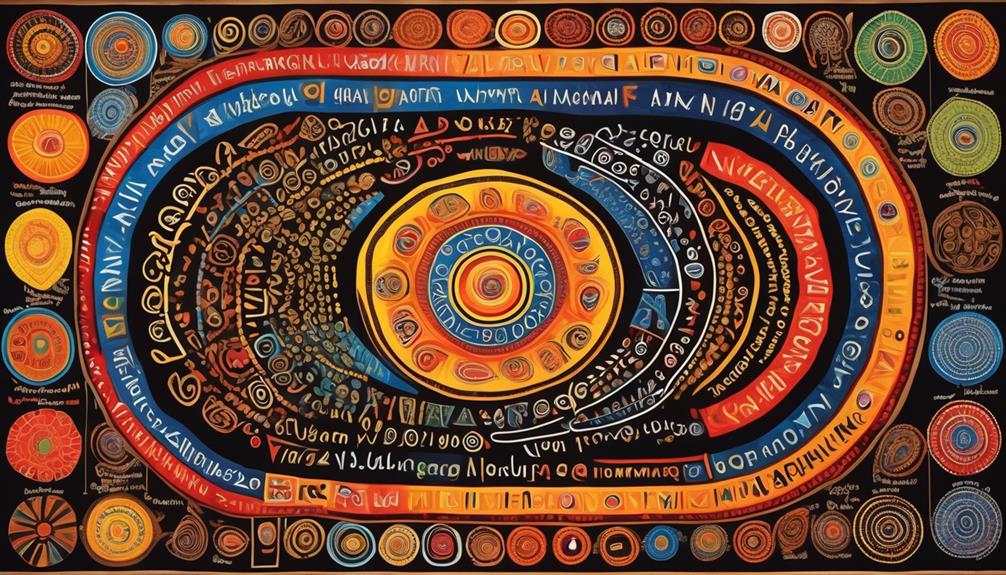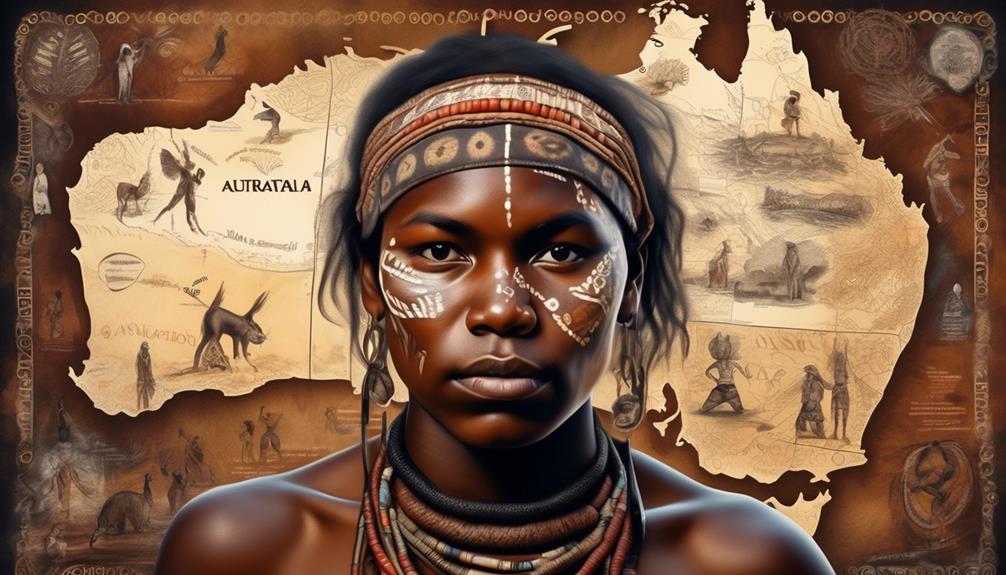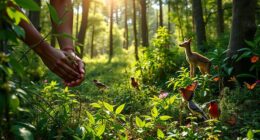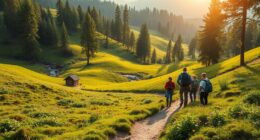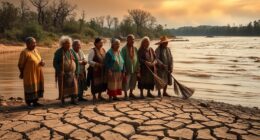Incorporating Aboriginal traditions into educational settings is like uncovering a treasure trove of cultural heritage waiting to be explored. Whether it be through traditional storytelling, folklore, or hands-on indigenous arts and crafts, there are numerous ways to incorporate the vibrant and diverse Aboriginal culture into the classroom.
But how exactly can these activities be seamlessly integrated into the curriculum and what are the potential benefits for students?
Let's delve into the practical aspects and advantages of incorporating Aboriginal activities in the classroom.
Key Takeaways
- Traditional storytelling and legends play a crucial role in preserving cultural identity and transmitting moral wisdom.
- Indigenous art and craft projects provide opportunities for students to explore cultural significance and develop artistic skills.
- Language activities, such as immersion and using labels in Aboriginal languages, promote a deeper understanding of Aboriginal heritage and respect for linguistic diversity.
- Engaging in traditional Aboriginal games and sports fosters respect for ancestral knowledge, promotes physical activity, and bridges the gap between generations.
Traditional Storytelling and Legends
Traditional storytelling and legends play a vital role in the cultural heritage of many Aboriginal communities, passing down wisdom, values, and history through engaging narratives. Oral traditions are a cornerstone of Aboriginal cultures, serving as a means of cultural preservation. Storytelling techniques have been honed over generations, ensuring that the essence of these narratives remains intact. Through these stories, moral lessons are imparted, shaping the ethical framework of the community.
The oral traditions of Aboriginal communities are integral to the preservation of their cultural identity. These stories aren't merely tales but serve as a repository of knowledge, encapsulating the history, beliefs, and values of the community. The storytelling techniques employed, such as the use of allegory and symbolism, add depth to the narratives, making them rich sources of moral lessons. Each tale is carefully crafted to impart specific values and teachings, ensuring that the cultural heritage is passed down to future generations.
In essence, traditional storytelling and legends aren't just entertainment; they're a vehicle for cultural preservation and the transmission of moral wisdom. These narratives encapsulate the essence of Aboriginal traditions, ensuring that their heritage endures through the ages.
Indigenous Art and Craft Projects
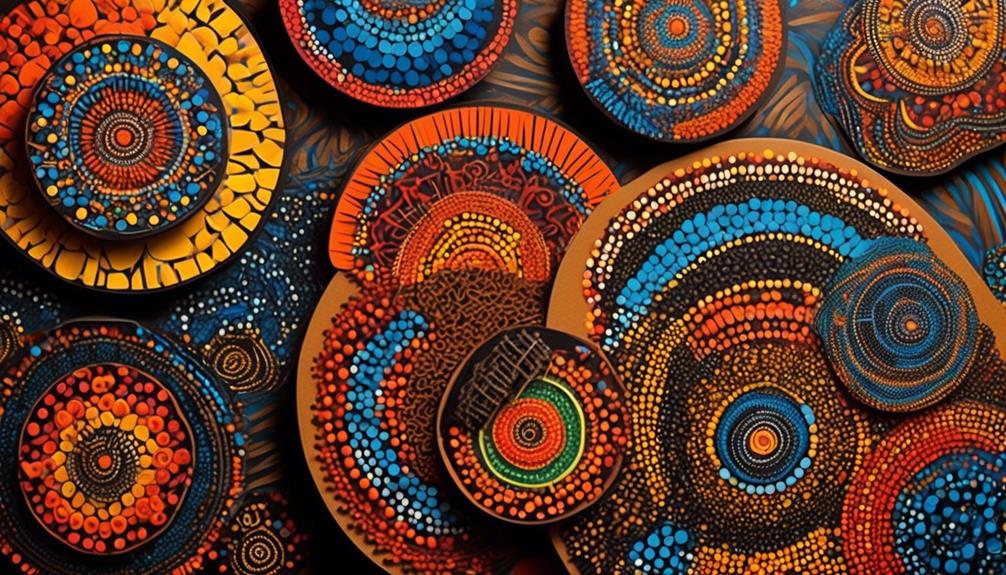
Exploring the rich cultural heritage of Aboriginal communities, we can now turn our attention to engaging Indigenous art and craft projects. Indigenous art and craft projects offer a profound way to connect with and understand the traditions and beliefs of Aboriginal communities.
Here are some powerful projects to consider:
- Dot Painting Techniques: Delve into the intricate world of dot painting, a technique with deep cultural significance. Learn about the stories and symbols behind each dot, and create your own dot painting masterpiece while honoring the traditions of Indigenous Australian art.
- Dreamcatcher Making: Engage in the art of crafting dreamcatchers, understanding their spiritual symbolism in Indigenous cultures. Explore the significance of each element within the dreamcatcher, and create a tangible representation of cultural connections and spiritual beliefs.
- Clay Sculpture: Work with clay to sculpt traditional Indigenous symbols, animals, or forms. Delve into the cultural significance of these symbols and their representation in Aboriginal art, creating a tangible connection to the rich heritage of Indigenous communities.
These projects not only foster artistic skills but also provide a platform for understanding and appreciating the profound cultural legacy of Indigenous communities.
Cultural Language and Vocabulary Activities
Engaging in cultural language and vocabulary activities allows students to immerse themselves in the rich linguistic traditions of Aboriginal communities, fostering a deeper understanding of their heritage.
Language immersion is a powerful tool for learning about Aboriginal cultures. One effective activity is to incorporate storytelling sessions conducted in the native languages of Aboriginal communities. This not only exposes students to the sounds and cadence of the language but also provides insight into the cultural significance of storytelling.
Additionally, vocabulary building exercises can be integrated into everyday classroom activities. For instance, using labels and signs in the Aboriginal language for common objects around the classroom can help students expand their vocabulary in a practical and immersive way.
Furthermore, creating picture dictionaries or flashcards with Aboriginal words and their English translations can aid in vocabulary retention. These activities not only enrich students' language skills but also foster a deep respect for the linguistic heritage of Aboriginal communities.
Traditional Aboriginal Games and Sports
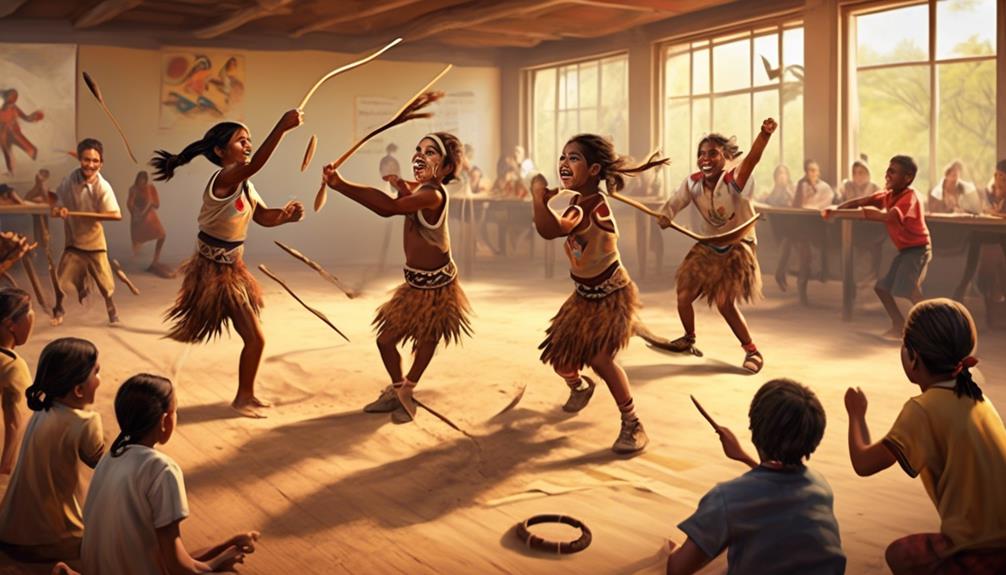
We enjoy discovering and participating in the diverse array of traditional Aboriginal games and sports. These activities provide a unique insight into the rich cultural heritage of the Aboriginal people, allowing us to connect with their traditions in a tangible and immersive way.
- Traditional hunting techniques are often incorporated into outdoor games, giving us a glimpse into the resourcefulness and skills of the Aboriginal people as they navigate their natural environment.
- Engaging in indigenous dance and music traditions not only offers a fun and lively experience but also deepens our understanding of the cultural significance of these art forms within Aboriginal communities.
- Participating in these traditional games and sports fosters a profound respect for the ancestral knowledge and physical prowess of the Aboriginal people, enriching our appreciation for their heritage.
Exploring these traditional Aboriginal games and sports not only promotes physical activity but also encourages a profound respect for the historical and cultural significance of these practices. It's a valuable way to bridge the gap between generations and honor the enduring traditions of the Aboriginal people.
Aboriginal History and Heritage Lessons
As we immerse ourselves in the traditional Aboriginal games and sports, we gain a deeper appreciation for the importance of including Aboriginal history and heritage lessons in our curriculum. Understanding the rich history and heritage of Aboriginal peoples is essential for fostering cultural awareness and respect in the classroom. By integrating lessons on Aboriginal cultural ceremonies and the impact of colonization on Aboriginal communities, we can provide students with a comprehensive understanding of the challenges and resilience of these communities throughout history.
| Aboriginal Cultural Ceremonies | Impact of Colonization on Aboriginal Communities |
|---|---|
| · Dreaming stories and rituals | · Loss of land and resources |
| · Traditional dance forms | · Disruption of cultural practices |
| · Significance of totems | · Intergenerational trauma |
| · Importance of songlines | · Efforts towards cultural revitalization |
| · Role of elders in ceremonies | · Contemporary social and economic issues |
Frequently Asked Questions
How Can I Incorporate Traditional Aboriginal Music and Dance Into My Classroom Activities?
We can incorporate traditional Aboriginal music and dance into classroom activities to promote cultural appreciation and engage students in Indigenous education.
Incorporating music and dance exposes students to traditional activities, fostering a deeper understanding of Aboriginal culture.
Are There Any Resources Available for Teaching About Traditional Aboriginal Medicinal Plants and Remedies?
Yes, there are many educational resources available for teaching about traditional Aboriginal medicinal plants and remedies.
These resources provide valuable insights into Indigenous healing practices and can be integrated into classroom activities to promote cultural understanding.
By exploring the use of traditional remedies and medicinal plants, students can gain a deeper appreciation for Aboriginal culture and history.
They can also learn about the natural world and its potential for healing.
What Are Some Ways to Incorporate Traditional Aboriginal Cooking and Food Practices Into the Classroom?
Traditional cooking offers hands-on learning experiences that promote cultural appreciation. By incorporating traditional Aboriginal food practices, students can engage in interactive experiences that deepen their understanding of Indigenous culture.
Exploring traditional recipes and cooking methods can provide a rich learning experience, fostering a deeper connection to Aboriginal traditions.
Integrating these activities into the classroom can help students develop a greater appreciation for the cultural significance of food in Indigenous communities.
Are There Any Specific Guidelines or Protocols for Inviting Aboriginal Elders or Knowledge Keepers Into the Classroom?
When inviting Aboriginal elders or knowledge keepers into the classroom, it's crucial to follow specific guidelines and protocols to ensure cultural sensitivity.
Prior to extending invitations, it's essential to engage in respectful dialogue with community representatives and seek their guidance.
How Can I Ensure That My Students Are Learning About the Diversity of Aboriginal Cultures and Traditions, Rather Than Just Focusing on One Specific Group?
We ensure our students learn about the cultural diversity of Indigenous peoples by incorporating a wide range of perspectives and traditions.
Inclusive education is crucial for understanding and respecting the richness of Aboriginal cultures. By exploring various groups and their unique customs, we foster a more comprehensive understanding of Indigenous heritage.
This approach helps to create a more inclusive and respectful learning environment that honors the diversity of Aboriginal cultures.
Conclusion
In conclusion, incorporating Aboriginal activities into the classroom not only enriches students' understanding of Indigenous cultures, but also fosters a sense of respect and appreciation for diversity.
As the old adage goes, 'It takes a village to raise a child,' and by embracing Aboriginal activities, we can create a learning environment that celebrates the wisdom and traditions of Indigenous peoples.
This approach promotes a more inclusive and compassionate society.
